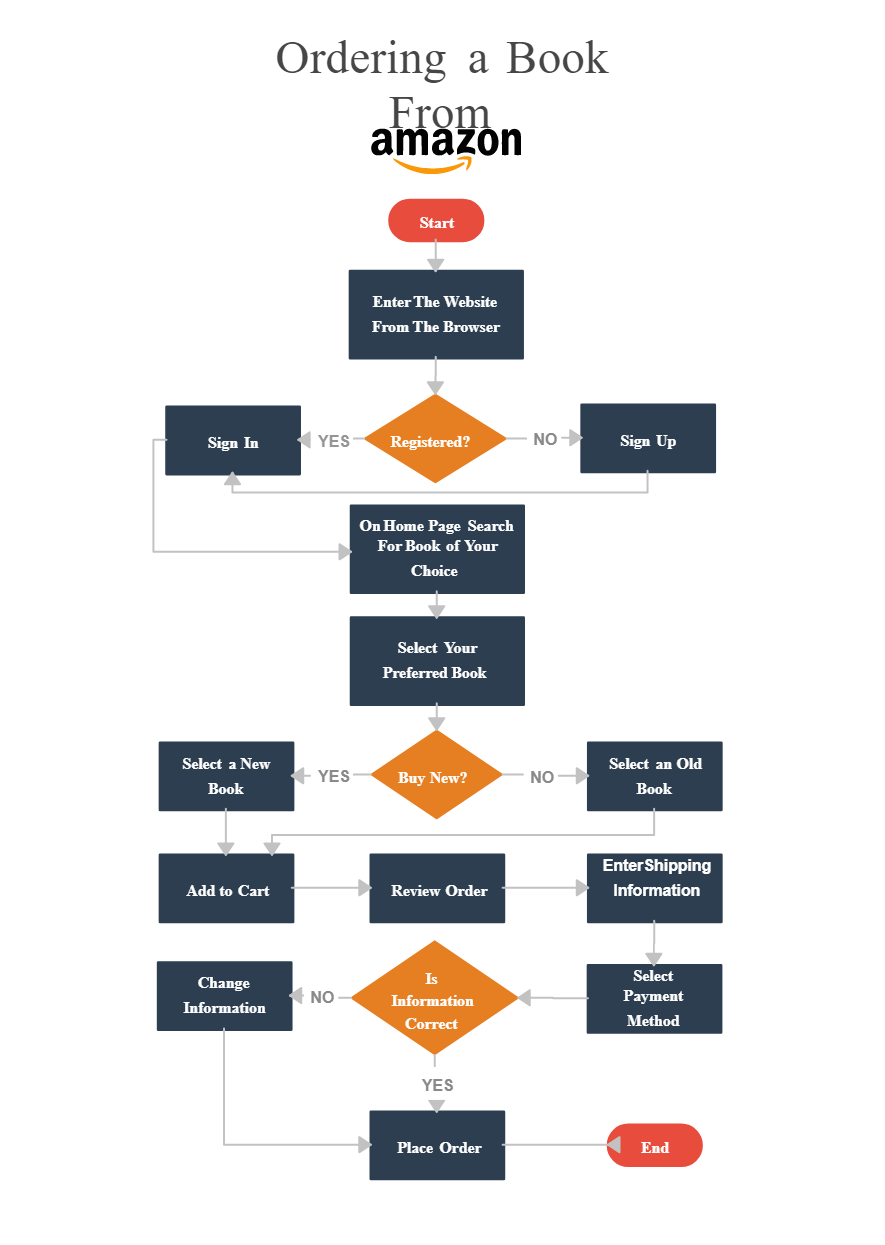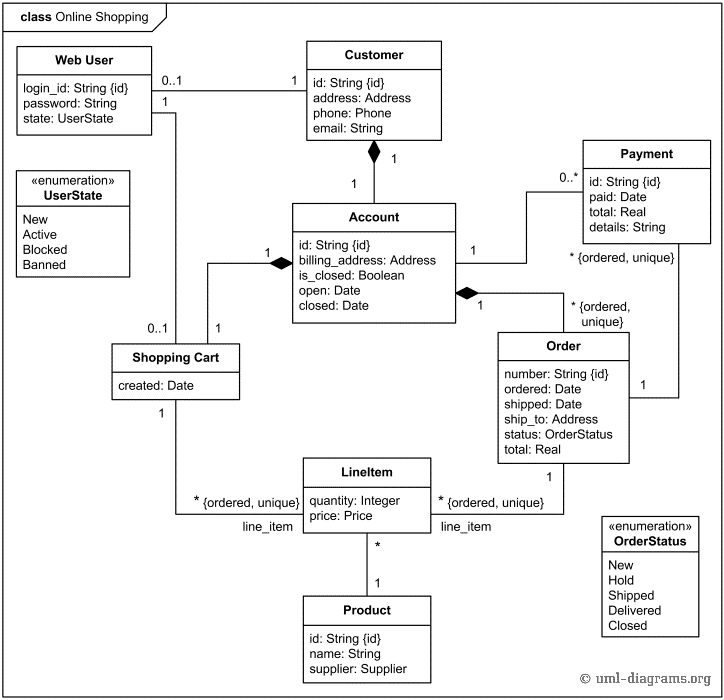Abstract
This report analyses the operations management of Amazon Company, focusing on the process design and layout, planning and control, capacity and inventory management and strategy and improvement. The report provides an overview of Amazon’s operations through the process map, layout diagram, 4V and 5 Performance Objectives, and technology. The report also provides a capacity management analysis to ascertain how demand is measured and how it is considered when planning production. Finally, the report considers the four-stage model to analyze the current limitations of the company and makes improvement recommendations.
Introduction
With an emphasis on process design and layout, planning and control, capacity and inventory management, and strategy and improvement, this research studies the operations management of the Amazon Company. An overview of some of Amazon’s operations will be given using appropriate procedures, diagrams, and models.
Chapter One: Process Design and Layout Analysis
1.1 Company Overview
Amazon, a global technology corporation, focuses on cloud computing, artificial intelligence, digital streaming, and e-commerce. The headquarters of Amazon is in Seattle, Washington, and it has operations in more than 30 nations. Since its founding in 1994, Amazon has developed into one of the most prosperous businesses in the world.
Amazon is a cloud computing and e-commerce corporation that focuses on giving consumers an online platform to buy and sell a range of goods and services. With the recent purchase of Whole Foods, it has entered the physical retail sector. Amazon aims to be “Earth’s most customer-centric company, where customers can find and discover anything they want to buy online.” Amazon’s ambition is to become the planet’s most customer-focused business.
Analyze lean operations and process design, considering layout and flow of resources;
Amazon has employed lean operations in its physical retail locations to save costs and waste. In these “lean” processes, inventory is kept to a minimum, the layout is optimized for resource flow, and labour expenses are minimized. The design of Amazon’s physical shops is created with the customer experience as a top priority to make shopping as simple and pleasant as feasible. Amazon has also concentrated on its online operations, streamlining the flow of resources via its digital channels to maximize the effectiveness of the supply of products and services. To increase labour productivity, Amazon has introduced Kanban methods, automated robots for picking, packaging, and shipping, mechanical checkout systems, and artificial intelligence technology (Dahlgaard, and Mi Dahlgaard‐Park, 2006, 270).
Analyse JIT, TQM and Six Sigma;
Amazon has used several quality management strategies, including Just-In-Time (JIT), Total Quality Management (TQM), and Six Sigma. While JIT expedites orders and minimizes excess inventory to help Amazon achieve lower costs and quicker turnaround times, TQM focuses on customer happiness by aiming for high-quality services and products. Amazon employs DMAIC (Define, Measure, Analyze, Improve, and Control) and Six Sigma to continually improve business operations in customer satisfaction and effectiveness areas. Amazon has also incorporated a range of additional tools and techniques to aid in the continuous improvement of its processes, such as process mapping and visual management (Dahlgaard, and Mi Dahlgaard‐Park, 2006, 260).
1.2 Process Map
All the actions taken to achieve Amazon’s objectives would be included in the process map for the company’s operations. These jobs would consist of those required for customer support and fulfilment and management-related responsibilities like sales, marketing, manufacturing, and distribution.
The following sections make up the process map for Amazon’s product production and service delivery: Customers place orders for goods or services on the Amazon website; internal software at Amazon uses this data to forecast goods and services for each customer; supply chain and logistics staff then choose the best delivery route; and finally, automated order-fulfilment software at Amazon locates the necessary resources and assigns the task. Both humans and machines are involved in the process since the machines handle duties like finding and ordering the desired things, while people are in charge of distribution and delivery to the consumer (GreyB, 2022).
Figure1.0: Amazon book order process by Creately

Drane, and Faramarzi, (2019).
1.3 Layout Diagram
The layout diagram for Amazon’s operations will show these activities’ organizational placement inside the company. It would demonstrate the organizational structure of the various teams as well as the connections between and interactions between the various processes.
The actual production sites, warehouses, and warehouses and storage spaces may be divided into three primary groups in the layout design. While warehouses and storage facilities hold items until they are delivered to consumers, real production sites are utilized to make the goods that customers have requested. In addition, digital tools like automated order-fulfilment software and scheduling algorithms are employed to handle the procedure (Matthews, 2018).
Figure 2.0: Layout Diagram of Amazon

1.4 Four vs and Five Performance Objectives
The Four Vs and Five Performance Objectives models might be used to evaluate the quality of Amazon’s operations. In this context, quality would relate to the calibre of customer service, the procedures’ effectiveness, and the output’s precision (Drane & Faramarzi, 2019).
The 4V and 5 Performance Objectives models look at the process in terms of its Volume, Variety, Variation, and Visibility (4V), which are significant in determining the efficiency of the process. These models apply to Amazon’s product production and service delivery. The efficiency of the procedures is also evaluated using Amazon’s five performance objectives: efficiency, quality, innovation, delivery, and cost. Product delivery’s degree of accuracy and promptness are indicators of the quality of Amazon’s goods and services (Matthews, 2018).
1.5 Technology
As machines perform more jobs, Amazon’s production and service delivery technology is mostly automated. The rate of order processing errors has been greatly decreased thanks to the employment of robots for picking and packing goods in the warehouse and supply chain optimization. The 4V and five performance goals have benefited from the automation of these operations since it has increased the effectiveness and precision of product manufacture and delivery (Matthews, 2018).
Chapter Two: Planning and Control.
Software for planning and controlling operations is only one of the many tools and technologies that Amazon utilizes to run its business. These technologies aid the business in better-managing production, monitoring inventory levels, and guaranteeing on-time delivery of all orders. Automated procedures and software, such as the scheduling algorithm and automated order-fulfilment software, manage the planning and control aspects of Amazon’s product manufacture and service delivery (Brightpearl, n.d). The Programme is used to find resources, allocate jobs, and anticipate demand for goods and services. This makes it more likely that the goods and services will be delivered on schedule and in the desired condition. Moreover, Amazon can effectively monitor inventory and optimize the delivery process because of the employment of robotics and AI in the warehouses and supply chain.
2.1 Current Approaches Used by Amazon
The methods Amazon now employs are adequate for the most part since they can meet the majority of the planning and control needs. However, there is still an opportunity for optimization as Amazon may investigate using cutting-edge tools like machine learning and artificial intelligence to speed up the procedure further.
2.2 Breakdown the process and estimated time
The two primary components of the projected time for order fulfilment are the sourcing and ordering of the desired products and the delivery of the things to the client. The cycle time for the order-fulfilment process may therefore be computed by adding the predicted durations for the two sections of the process, from order completion through delivery.
Chapter Three: Capacity and Inventory Management.
3.1 Capacity Management
Amazon’s capacity management strategy for product manufacture and service delivery focuses on ensuring its existing resources meet the incoming demand. Essentially, this entails estimating future demand and ensuring that resources are distributed properly. Numerous elements, including seasonal changes, consumer demand, and supply chain data, are considered when measuring demand. The predicted demand is then determined using this information, and the organization’s capacity is checked to ensure it can satisfy the demand. Capacity management is crucial in Amazon’s strategy for producing goods and providing services. The automated scheduling system, which considers historical buying patterns and projects future demand, measures the demand for goods and services (Song et al., 2020, p. 40). Once the demand has been established, the information is utilized to plan production and modify inventories and resources. Furthermore, Amazon analyses consumer data and properly forecasts demand upcoming goods and services using machine learning and AI technology.
Chapter Four: Strategy and Improvement.
4.1 Hayes and Wheelwright’s four-stage model
According to Hayes and Wheelwright’s four-stage model, Amazon is now in the third stage, concentrating on enhancing responsiveness and control to boost customer happiness and productivity. The primary drawbacks of the existing system are those procedures that are still manual and ineffective, such as order fulfilment and shipping. In addition, the business still needs to completely incorporate cutting-edge technology like machine learning and artificial intelligence into its procedures, which might enhance productivity dramatically (Hayes & Wheelwright, 1984).
Automated procedures and machine-learning algorithms may be included in the system to increase responsiveness and control over Amazon’s product manufacture and service delivery. As a result, Amazon would be able to improve demand forecasts and improve order fulfilment accuracy. Moreover, robotic process automation (RPA) might assist in lowering the need for human labour and enhance the effectiveness of delivery procedures (Altrad et al., 2021, p. 176).
Conclusion
This paper examined Amazon’s operations management with an emphasis on process design and layout, planning and control, capacity and inventory management, as well as strategy and improvement. The significance of these activities to Amazon’s performance has been underlined in this study via an overview of pertinent procedures and illustrations. Based on the four-stage model, the report’s recommendations for improvement were made.
Reference List
Altrad, A., Pathmanathan, P.R., Al Moaiad, Y., Endara, Y.M., Aseh, K., El-Ebiary, Y.A.B., Farea, M.M., Latiff, N.A.A. and Saany, S.I.A., (2021, June). Amazon in Business to Customers and Overcoming Obstacles. In 2021 2nd International Conference on Smart Computing and Electronic Enterprise (ICSCEE) (pp. 175–179). IEEE.
Brightpearl (n.d.). Top 12 Amazon Inventory Management Software. [online] Brightpearl. Available at: https://www.brightpearl.com/best-amazon-inventory-management-software.
Dahlgaard, J.J. and Mi Dahlgaard‐Park, S., (2006). Lean production, six sigma quality, TQM and company culture. The TQM Magazine, 18(3), 263–281.
Drane, M. and Faramarzi, H. (2019). Process Design. [online] pressbooks.senecacollege.ca. Available at: https://pressbooks.senecacollege.ca/operationsmanagement/chapter/process-design/.
GreyB, T. (2022). Amazon Business Strategy: Insights of its Core Operations and Investment. [online] GreyB. Available at: https://www.greyb.com/blog/amazon-business-strategy/.
Hayes, R. H., & Wheelwright, S. C. (1984). Restoring our competitive edge: competing through manufacturing. New York: John Wiley.
Matthews, T. (2018). Business operations: Using technology to improve operational processes. [online] Fourth Source. Available at: https://www.fourthsource.com/tech/business-operations-using-technology-improve-operational-processes-22584.
Song, J.S., van Houtum, G.J. and Van Mieghem, J.A., 2020. Capacity and inventory management: Review, trends, and projections. Manufacturing & Service Operations Management, 22(1), pp.36-46.
 write
write